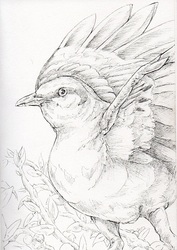Sign In
CloseTotem of the day is Gecko! If you have been struggling with reaching through to someone concerning a situation, it may be time to removed yourself and move on from it. However, don't stop yourself from speaking up even if there is the possibility of disapproval from others. If you are in the middle of a conflict, remember to be very clear and firm in your communications. Assess your situation carefully to understand which option is the best for your situation. It may be beneficial for you to spend time in song or chants and to begin recording the details of your dreams in order to reread them for messages that may be contained within them. If you have become tired and feel like you aren't reaching your goals, have patience and dedication to complete it. The rewards will be worth the hard work. The Gecko spirit guide is known for it's connection to regeneration, agility, intelligence, empathy, and adaptability. Gecko can come to us as a reminder to watch for messages within your dreams that may aid you in readjusting mindset that may not be helping you. It may be time to reassess if you have been holding too tightly onto aspects that are actually harming you. Look within to find your balance by allowing yourself to evolve and regenerate. Have patience and understanding in the coming time. Listen to your instincts and assess your situation to know if you need to fight or flee. In Hawaii, they are seen as a sign of good luck while in Thailand, if you hear the cry of the Tokay Gecko 7 times in a row it will grant you good luck. People who connect with Gecko have heightened empathy for those around them with an ability to understand viewpoints other than their own. These individuals have a friendly nature, but are not afraid to stand up for themselves if attacked or betrayed. These types work well as negotiators due to their perceptive minds.
Gecko, Gekkonidae, are carnivorous reptiles that can live between 2 and 9 years in the wild. Being a type of lizard, there are over 1,500 species of Gecko. All of these species have similarities including a simple diet, a skin covered in tiny, sticky hairs, and unique tails. Geckos can be found primarily in warmer areas of the world along the Equator and in the Southern Hemisphere, but they can be found in every continent except for Antarctica. Geckos live in a variety of environments from desert and mountains to rain forests, grasslands, and even urban areas. The size of these reptiles depends on their species. The largest Gecko is a subspecies of the Caledonian Giant Gecko which can grow up to 17 inches long and weigh up to 10 oz. The smallest Gecko, the Tiny Dwarf Gecko, is also the smallest known lizard and grows to just over half an inch long and weighs less than .005 oz. The San Lucan Banded Gecko seen in this illustration grows to around 6 inches long. In order to grow, they will shed at regular intervals. They will even speed up the shedding by peeling and eating the loose skin. Species of Gecko range in a variety of colors and patterns including spots, splotches, bands, and stripes. The diet of a Gecko consists of fruits, flower nectar, and insects. While they will primarily eat smaller insects and worms, larger species of Gecko have been known to eat small birds, other reptiles, and even small mammals. Geckos are nocturnal, doing their hunting and activity during the night and hiding from the heat of the day to sleep. These reptiles have very unique features including the hair-like spines covering their skin which trap air and cause water to bounce off. Their bumpy texture causes water droplets to remain as small balls which roll off due to gravity or wind. When this happens, the balls of water also take any dust or dirt with them to clean the Gecko. They can not blink which means they must lick their eyes to clean them. They are also known for their ability to walk up vertical surfaces. This is enabled by the specialized adaptations of their feet. Some species have tiny hairs on their feet that acts like sucker pads while others possess adhesive toe pads created by spatula-shaped bristles arranged on their toes. Their toes can actually bend in the opposite direction from human fingers which allows them to peel their toes off surfaces. A Geckos tail also possess score lines that allow them to easily break off if a predator grabs it. The tail is later regrown. The process of losing a tail is a defense mechanism known as autotomy. Unlike other lizards, Geckos are actually able to chirp which is used in social interactions. When breeding occurs, they will engage in courtship rituals including posturing, vocalizations, and even nipping or nudging. Depending on the species, Geckos can give birth to either live young or lay eggs. The small amount of species who can give live birth belong to the subfamily Diplodactylinae and include the Cloudy Gecko, Goldstripe Gecko, and Jewelled Gecko. The majority of Geckos lay eggs. These females will lay between 4 and 6 eggs in a single clutch per year. These sticky, white eggs are laid in logs or tree bark for protection and are left alone afterwards. The young will hatch after 30 to 80 days later. While parental ties are limited, the females will allow their offspring to remain near them to offer protection by her presence.
Submission Information
- Views:
- 431
- Comments:
- 0
- Favorites:
- 2
- Rating:
- General
- Category:
- Visual / Traditional




